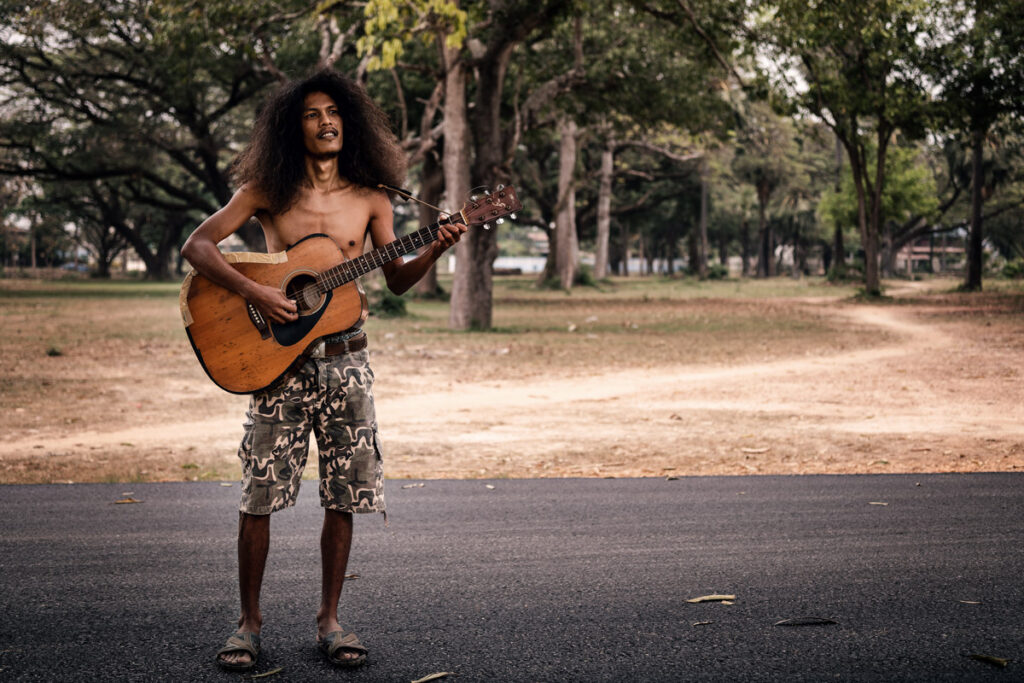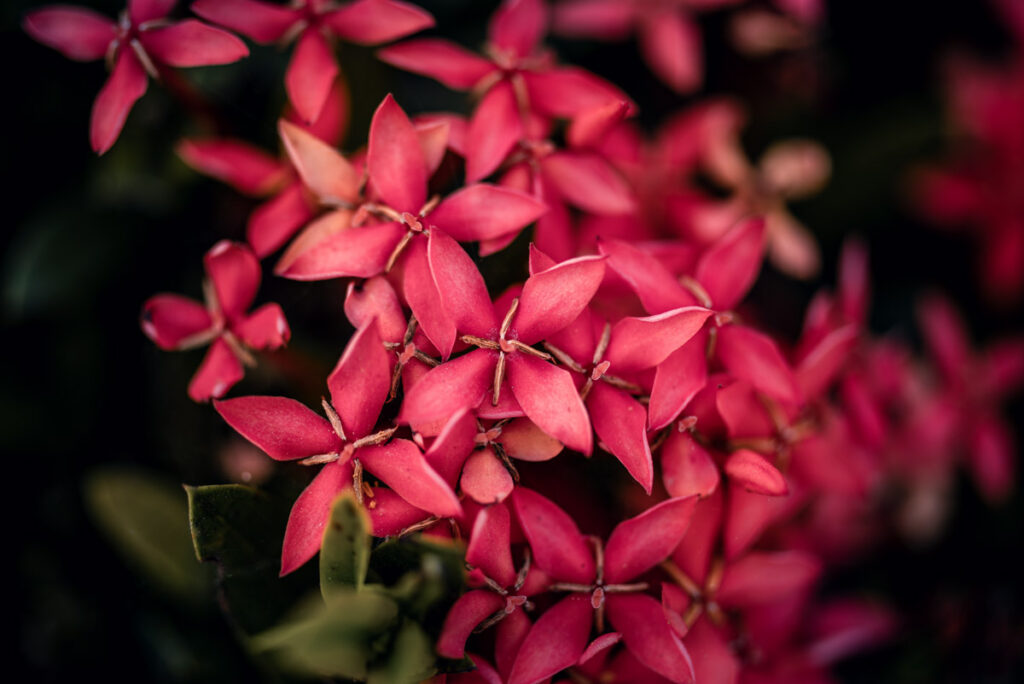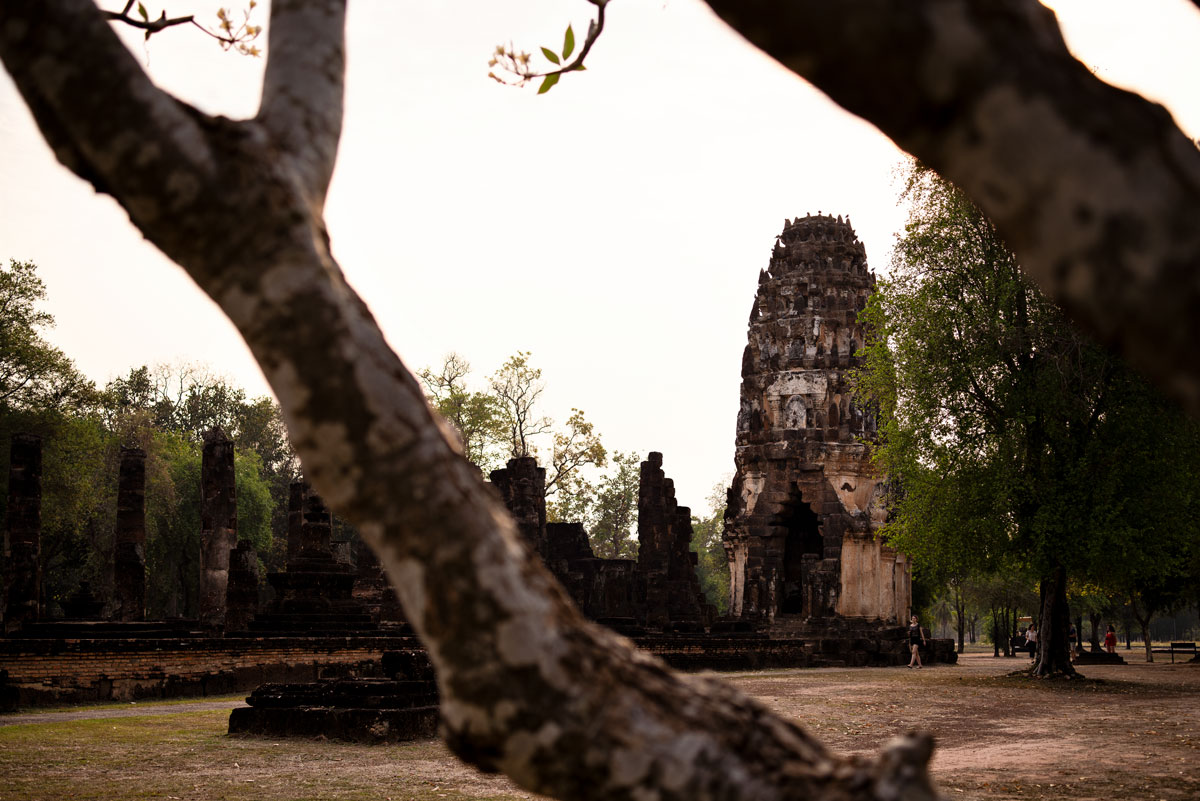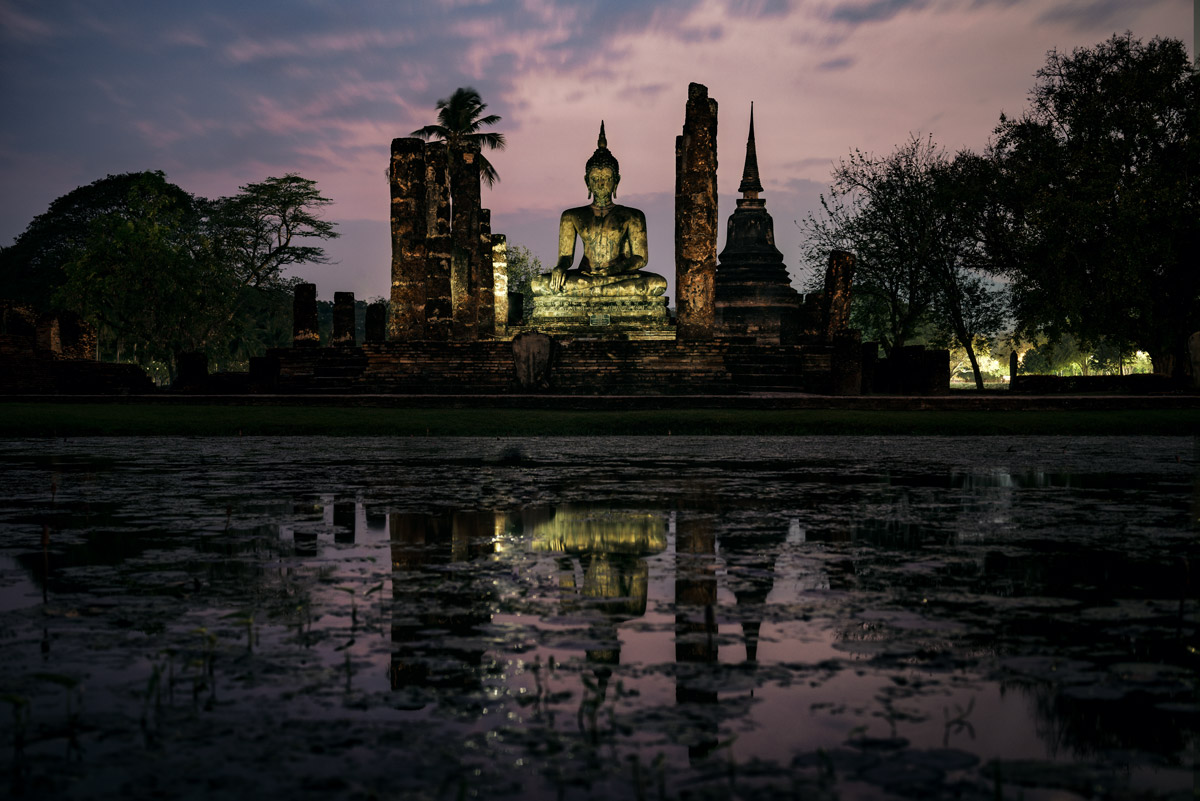Sukhothai
Sukhothai is the cradle of Thailand. Under the reign of King Ramkhamhaeng, the kingdom of the same name and its capital city flourished in all its glory. Buddhism found its way into the kingdom and the Thai alphabet – as it is essentially still used today – developed (or as the nationalized version of Thai history has it: was first fully recorded by King Ramkhamhaeng). Hindu and Buddhist spiritualism met and mingled with animistic ideas. An illiterate and traditional population was familiarized with new values and a foreign culture. The result was a heterogeneous and open society, rich in the diversity that still characterizes Thailand today.
However, Sukhothai’s power only lasted for a brief moment; after around 150 years, Ayutthaya had become the new center of trade and power. Sukhothai was not conquered and destroyed overnight by foreign troops – as would later happen to Ayutthaya – it bled out and faded away.



Next to the historic Sukhothai, which is less than half the size of historic Ayutthaya, the new city of Sukhothai has emerged. It is a typical Thai city; the gateway to the north and surrounded by green hills and rice fields.
We ride through the historical park on bicycles. On this hot afternoon, we are almost always the only people roaming around the ruins of the temples. Except for one man who stumbles out of the bushes with his guitar, starts singing a Bob Marley song and interrupts himself halfway through, only to disappear into the bushes again just as quickly.
The temples inside the city walls are relatively well preserved, everything outside has crumbled almost beyond recognition. The park is well-kept, flowers are planted everywhere and it’s just a pleasure to be here. Finally, we wait for the sunset in front of a particularly beautiful Buddha statue of the central Wat Mahathat. Today it is in soft shades of purple.

The next morning, we drive to the nearby Si Satchanalai Historical Park. Another site full of ruins whose historical significance we can barely fathom. Hundreds of bats hang in the temple corridors and hollow stupas. A pack of street dogs chases across a meadow. What will remain of our civilization? Of downtown Tokyo, the billboards in Times Square, London’s subway network, the towers of Dubai? In 500 years’ time, will families make pilgrimages to these places to see the last remnants of long-forgotten people and empires?
Info about our trip
Admittedly, Sukhothai doesn’t really have much to offer, especially in direct comparison to the more easily accessible Ayutthaya, which can be visited as a day trip from Bangkok. However, if you are on your way north anyway – for example to Chiang Mai or Chiang Rai – then Sukhothai is a recommended stopover. A whole day is definitely enough to explore the historical park in a relaxed manner. Stay another day if you want to stroll through the new Sukhothai and explore the Si Satchanalai Historical Park. Either way, you should have a certain interest in Thailand’s history and ruins in general.
Apart from Chiang Mai, the north of Thailand is quite cheap – this is already obvious in Sukhothai.
We stayed in historic Sukhothai and ate in a simple Thai restaurant near our hotel during our stay – also due to the rather limited choice. The food at Sureerat Restaurant was good and cheap, so you can’t go wrong.
In general, you have the choice of staying in either the new or the historic Sukhothai area. New Sukhothai is closer to the bus station (where you may arrive and from where you will have to leave early in the morning) and has a larger selection of hotels and restaurants and a bit more life around you.
If you are mobile and / or want more peace and quiet, stay in historic Sukhothai. We stayed at Sukhothai Garden – a very nice, small hotel with free bike rental and a great breakfast. You can be in the historic park in less than 5 minutes by bike.
Sukhothai is not a crowded tourist attraction and is generally a rather quiet little town. We therefore consider it to be fairly safe.
Thai society is very open-hearted and fond of children. It was not uncommon to see a bunch of Thais (mainly women) standing around our boy. The way Thais treat children is different to what we are used to in Europe. We would never go up to a stranger’s child and want to take it in our arms. This happens all the time in Thailand – people don’t even ask beforehand. You should also be prepared for Thais to take photos of your children – often without being asked. They will quickly whip out their smartphone and take a selfie with the blond, little farang (foreigner). Think about how you want to deal with this – from our Western perspective – cross-border behavior. You won’t always be able to prevent it. Be respectful and smile and let your counterpart know that you would like a little more distance. At the same time, you are even more welcome everywhere with children and we were often given preferential treatment (e.g. in queues).
However, don’t expect extra changing rooms anywhere – the sanitary facilities are often in an inadequate condition anyway. So take wet wipes and disinfectant gel with you. You can buy basic baby supplies in any 7/11 or supermarket. Diapers are not cheap and are often only available in large packs. It’s best to leave the baby carriage/stroller at home. The sidewalks are usually too bad and there are too many pedestrians and cars, especially in Bangkok, so you won’t have much fun with it. The most flexible option is a baby carrier.
We traveled from Bangkok in our own minivan and the route to Sukhothai alone was incredibly idyllic. Of course, the city also has a well-developed bus terminal that connects Sukhothai with all other major cities, at least with a detour via Bangkok. From the bus terminal, you can then take a cab to your accommodation or to the historical park. If you also want to visit the Si Satchanalai Historical Park, find a tour operator in New Sukhothai or ask at your accommodation.
- For the real history enthusiasts among you, we recommend the unfortunately out-of-print Sukhothai: Its History, Culture, and Art by Betty Gosling – you might be able to find a second-hand copy
- A very good introduction to Thailand’s history in general can be found in Thailand’s Political History: From the 13th Century to Recent Times by B. J. Terwiel
